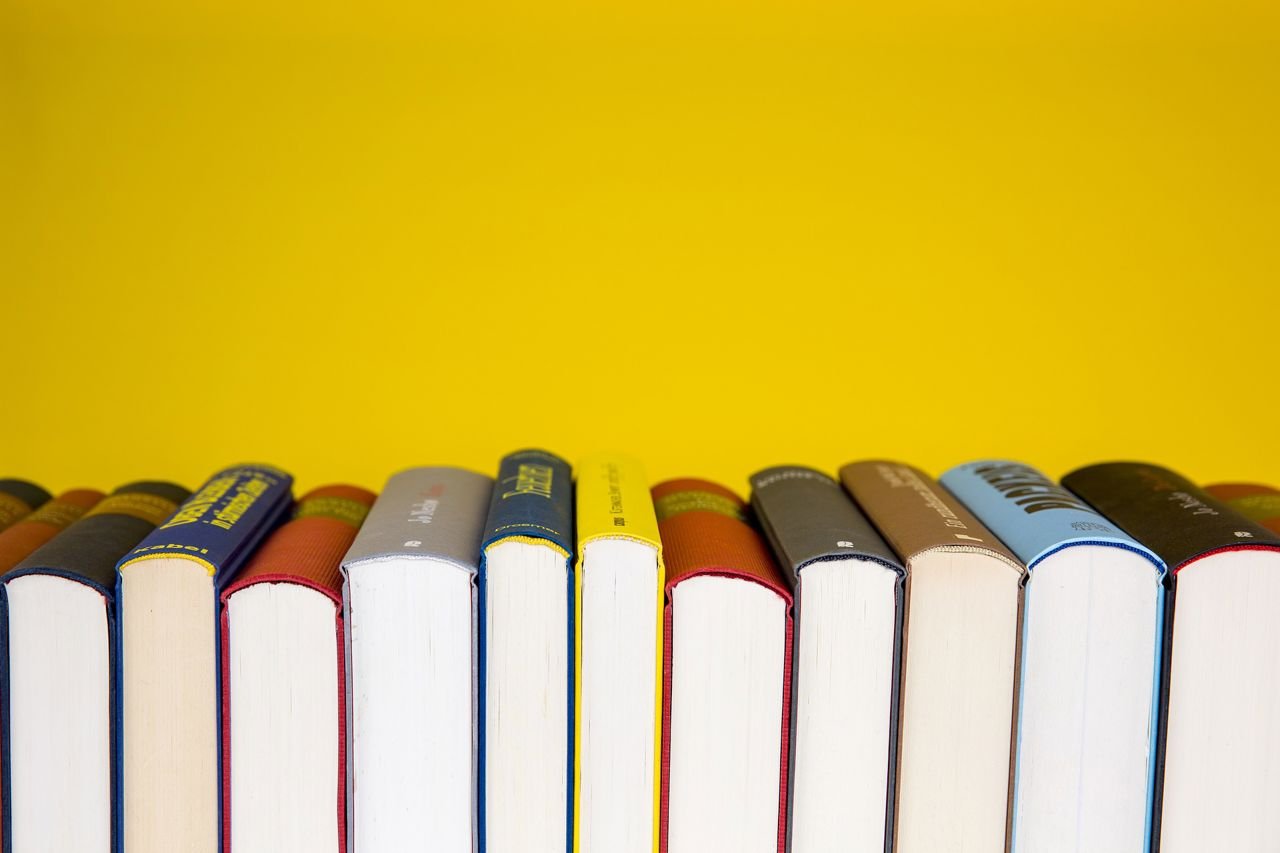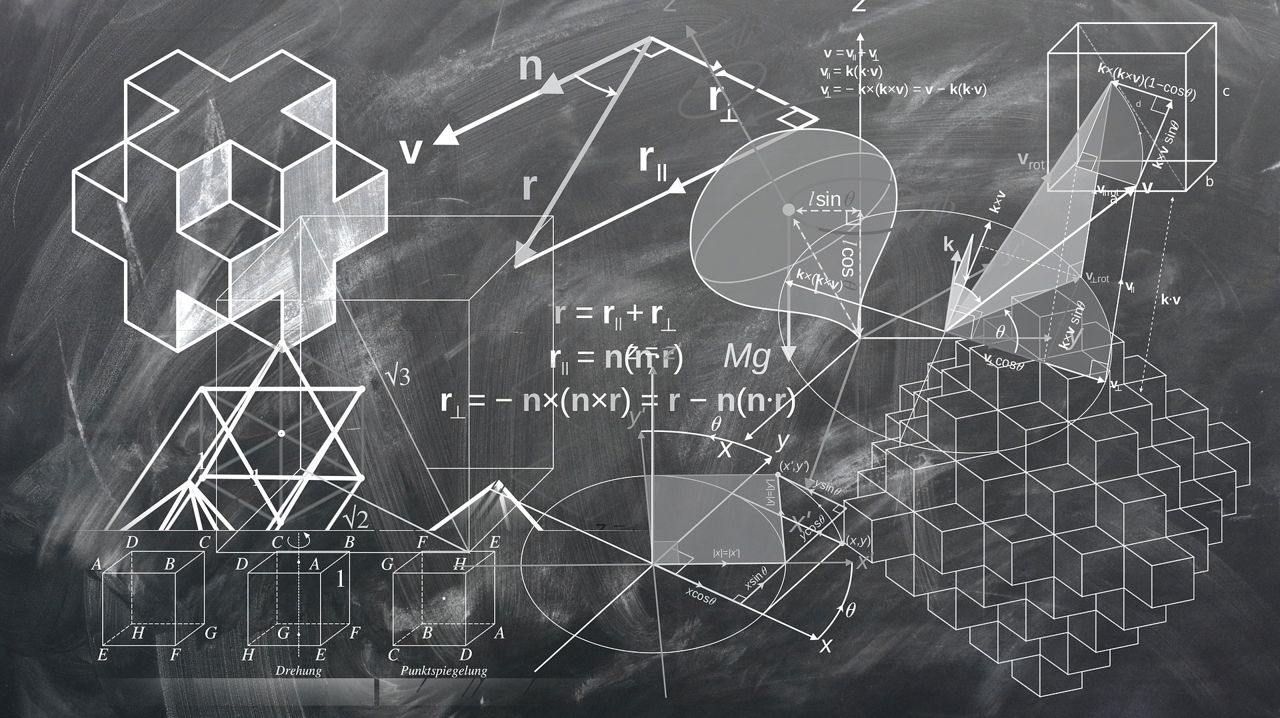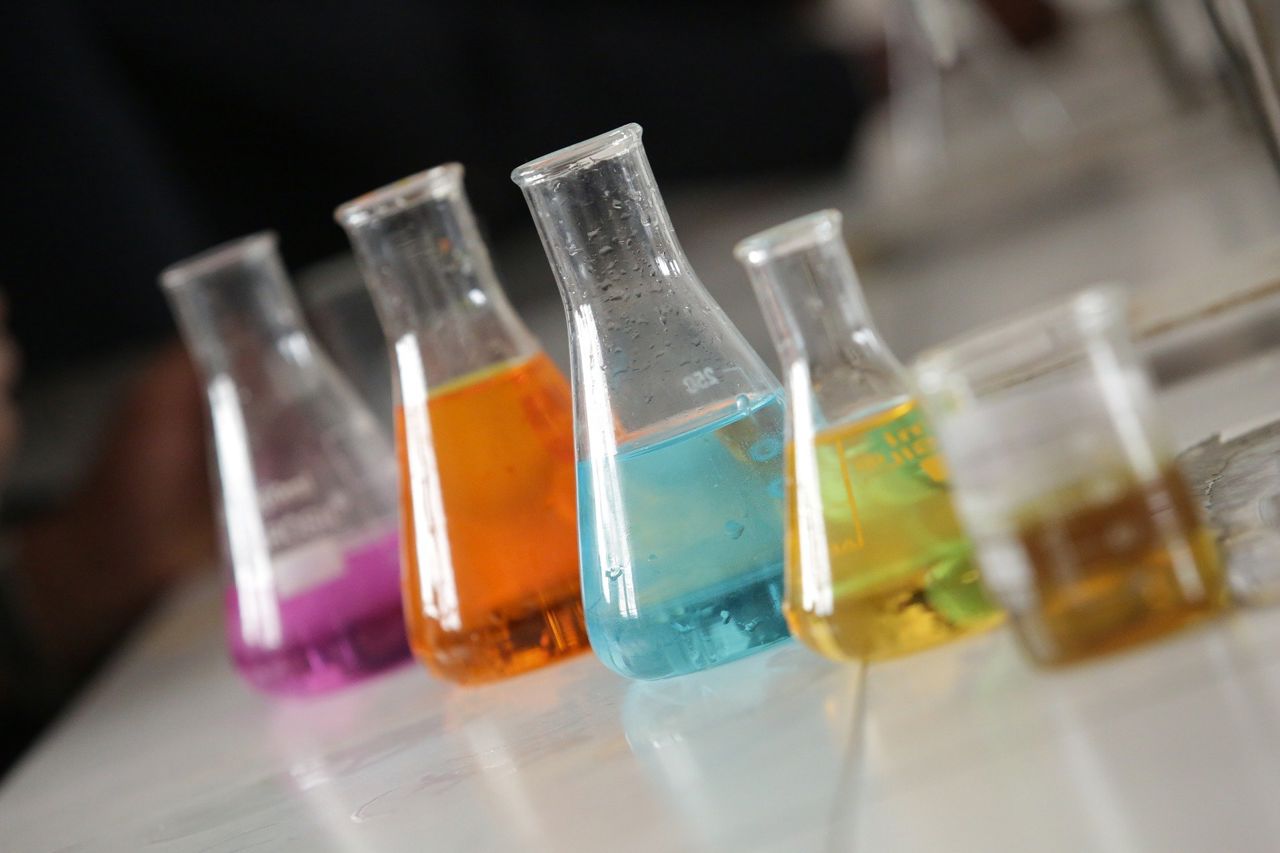Subject choices
Here you can read more about the subjects that we offer in each of the groups. Students in the Diploma Programme need to have one subject from each of the first five groups, plus one from group six, or an additional subject from group three or four. Three subjects are studied at Higher level and three at standard. Higher levels subjects have 240 hours of teaching and standard 150 hours, over the two years of the programme.



English A: Language and Literature
English A: Language and Literature is a subject meant for native/fluent speakers of English. The ‘Language’ part of the course focusses on how language is used and to what effect and the ‘Literature’ part is focussed on reading and analysing works of literature. We normally work with themes, which means that the works of literature are connected to the non-literary texts we read for the ‘Language’ part of the course through a theme. For example, if we discuss propaganda techniques for ‘Language’, then the work of literature we are reading will also be connected to this theme. We might study propaganda posters and read ‘1984’ by George Orwell in parallel.
You will learn through lectures from the teacher, group work and individual assignments. The IB expects you to read all text types, from classic works, for example by Shakespeare, to articles and web pages on relevant topics. This course is available at both higher level (HL) and standard level (SL).
Norwegian A: Literature
Norsk A er et kurs for elever som er morsmålsbrukere eller har tilsvarende gode norskkunnskaper. Det er et fag der vi leser, diskuterer og analyserer skjønnlitterære tekster, i tillegg til å lese noe sakprosa. Eleven får kunnskaper om sjangrene, ulike lesemåter og ulike former for tekstanalyse. Vi leser også en del oversatt litteratur, og er interesserte i forholdet mellom litteraturen og verden rundt oss.
På Norsk A leser elever på standard level (SL) 9 hele verk i løpet av 2 år på IB. Dersom du tar higher level (HL) skal du lese 13 verk i samme periode. Vi leser bredt både når det gjelder tid og sted - to eksempel på verk er Njålsoga, med opphav på Island på 900-tallet, og Carl Frode Tillers Innsirkling, som kom ut 2007. Oversatt verdenslitteratur leser vi også, f. eks. tragedier fra antikkens Hellas, og grafiske romaner fra samtidens Iran.
Elevene skal kunne kommentere litterære virkemidler i verk de har lest, og de skal kunne skrive litterære analyser. Derfor øver vi en del på fagspråk, og vi bruker tid på å jobbe med å skrive gode analyser. Men vi skal først og fremst lese fordi vi får bedre innsikt om oss selv og om verden gjennom litteraturen.
På slutten av kurset er elevene forberedte på de krevende oppgavene som ligger i eksamen. Vi har gjennom kurset øvd på eksamensformatet, men viktigst; utviklet en dypere forståelse for litteratur og for litteraturens plass i kulturen, og for seg selv som et skapende og tenkende menneske.
Studies in Language and Literature

Norwegian B
In a Language B course, you try to develop your pre-existing understanding of a language. In Norwegian B we don’t learn the basics of Norwegian but rather learn how to overcome some of the challenges you face when speaking and writing in Norwegian. This subject is therefore not meant for native/fluent speakers.
Norwegian B is not only about overcoming your difficulties with the Norwegian language, but is also about developing critical thinking and analytical skills. The way we learn these skills is by analysing and debating controversial subjects within Norway and/or internationally.
Norwegian B is taught in Norwegian although important information regarding the subject may be communicated in English to facilitate the understanding among the students.
This subject is available at both higher level (HL) and standard level (SL). HL students have more hours of teaching than SL students, and will discuss more topics and in more depth. HL students have to write longer texts and are expected to show a greater understanding when it comes to their assessments.
Chinese ab initio
In Chinese AB Initio or rather Mandarin AB Initio, we start learning Mandarin. The course starts with some key phrases and basic grammar for how to both speak and write Mandarin. We usually spend large part of the lesson learning new vocabulary. The book introduces the most commonly used vocabulary early on, so students are able to start speaking as fast as possible. However, understanding the strong cultural-linguistic connection in mandarin is also a significant part of the lessons. A good part of our mandarin lessons are focused on Chinese culture. Each chapter of the book narrows down to a certain aspect of daily life, like different foods, school, family, work etc.
With a native Chinese teacher plus a nearly completely subsidized trip to China, the cultural and general value of this course is definitely outstanding. This serves as a refreshing part of the course and makes for a more globally conscious and open-minded individual.
The Chinese language can seem incredibly challenging in the beginning. Due to its ideograms and a totally different system it has a tendency to scare off a bunch of people. When the system starts to make sense, the workload slowly becomes less and the characters become easier. However, be sure to keep up with the pace, because Chinese is not an easy subject to catch up on. It is not necessary to pour lots of time into this subject, but consistency is essential for success.
History
The best way to learn where a country is going is by learning about its past. In this subject, you learn about why societies and politics are the way they are today. In History you will learn about different epochs, wars and prominent historical figures. You learn through different methods. Most of what you’ll learn is in the books and a lot of the learning involves reading and discussing the content. You will develop your methodical skills and become both analytical and critical in your academic approach. The essay writing gives you important skills that are useful when you are going to university or similar academic institutions.
The subject is divided into standard level (SL) and higher level (HL). Where SL has three hours a week while HL has five hours. Students taking SL focus on the core of the subject, while HL students go deeper into certain topics. In HL history we also dive deeper into a specific continent’s background with the teacher of your subject choosing one out of the four regional options. The continent we’re currently working with is Europe.
What does a student say about History? "I love the discussions that we have in class about History and how it changes depending on your perspective and sources"
Psychology
Psychology is a fascinating course which takes you through a wide range of subject topics. It focuses on the 3 main approaches of psychology: biological, cognitive, and sociological. This class allows you to learn how to critically evaluate different types of studies and gives you a deeper and wider understanding of why we, as humans, behave the way that we do.
Many lessons are spent studying concepts and experiments through reading, and class discussion. However, this does not mean there is a lack of practical work. Each student is required to complete an IA (Internal Assessment), where you plan and complete an experiment which replicates a well-known study that the class and teacher agree on. In addition, there are also two written exams at the end of the course.
In this subject reading and studying the prescribed book is essential in order to do well. It is important to learn effective notetaking. Of course, the teacher will be available to help you and explain what you need to do.Please, note that this course is only available at standard level (SL).
Economics
In IB Economics, you will learn about four different areas of economics:
1) Microeconomics is concerned with “small scale”, for example, an individual person and or a firm. You will learn about the market mechanisms of supply and demand, how the consumers and firms behave and respond to incentives etc. You also learn about market failures and what happens when the free market does not act “as it should”.
2) Macroeconomics is concerned with economics on a “large scale”, for example, a national economy. This concerns topics such as GDP, unemployment, inflation/deflation, interest rates etc.
3) International Economics. Here you will learn about free trade, how trading policies and protectionist policies may affect the economy and the pros and cons of different policies and viewpoints.
4) Development. This topic is concerned with international aid, economic development.
In class, we have lectures based on the book and curriculum. We read a lot of articles and watch economics-related videos on YouTube. We discuss different economic topics and situations and work with exercises. We have to follow real world events from around the world, as the exam requires students to apply knowledge from real life situations.
Physics
In physics, you learn about the fundamentals of the universe and the forces that act between them. You learn, for example, about natural laws and phenomena and how to make calculations about energy and forces. Topics range from Mechanics through Electricity to Quantum Physics.
IB physics can be taken at both standard level (SL) or higher level (HL). HL touches upon more topics and more advanced fields than SL.
Physics is a practical subject. We learn through solving problems and equations. We also conduct experiments and write scientific reports. However, there will sometimes be discussions between teachers and students, or between students.
Chemistry
Chemistry is an experimental science that combines academic study with the acquisition of practical and investigational skills. In Chemistry you will learn about the properties, composition, and structure of substances, the transformations they undergo, and the energy that is released or absorbed during these processes. When working on the individual investigation you will learn how to design an experiment and write a scientific report
Chemistry can be studied at standard level (SL) or higher level (HL). While there are core skills and activities common to both SL and HL, students at HL are required to study some topics in greater depth, to study additional topics and to study extension material of a more demanding nature.
You will learn through lectures, group activities, student presentations and practical work.
Biology
In biology you will learn about many different topics, ranging from ecology, ecosystems, and evolution, to cell biology, animal physiology, and biotechnology. Lectures, lab exercises, and assignments give you a robust academical foundation for further studies in biology. In an exercise named the “individual investigation”, for example, you will perform an independently designed experiment, which is a good preparation for scientific assignments at the university.
You can choose between Higher Level (HL) and Standard Level (SL), where the difference is in the amount of time you spend on each subject. HL students go into more depth, but also get to enjoy unique topics like plant anatomy.
With plenty of lab hours, and a more independent learning experience, IB biology, compared to Norwegian VGS, gives a significant advantage if you want to study biology at the university level.
GROUP FOUR PROJECT
The group 4 project is a collaborative activity where students from different group 4 subjects (biology, chemistry, physics) work together within or between schools. It can be practical or theoretical and aims to develop an understanding of the relationships between scientific disciplines and their influence on other areas.
Mathematics - Analysis and Approaches (AA)
In math higher level (HL) we learn everything you would in a normal Norwegian math class, but in more depth. We go through topics such as trigonometry, probability and statistics, calculus, functions, algebra and complex numbers. The options in math HL are statistics and probability, sets, relations and groups, discrete mathematics and calculus. In the HL course we learn a lot of theoretical math that will be useful for someone wanting to get into STEM (science, technology, engineering, math) courses later.
You will learn through lectures and doing exercises. The teachers are committed and have extensive knowledge of the curriculum and will help you understand the problems and topics you have trouble with. However, you will have to be prepared to do a lot of self-studying and work with exercises. You do not have to be a mathematical superstar to study mathematics HL, but you do have to be disciplined and committed, and willing to do the exercises in the book.
Mathematics – Application and Interpretation (AI)
Mathematics Application and Interpretation (AI) is a course suited for those who are adequate at mathematics, but who do not feel they are strong enough for Mathematics Analysis and Approaches. It is not as difficult as math Analysis and Approaches, but it still covers a wide range of topics, such as Trigonometry, Logarithms, Statistics, Integrals and Calculus. Math AI is a good base for students considering subjects such as Economics and Biology, but for individuals who want to consider Physics, Mathematics Analysis and Approaches is more suitable.
You will learn through lectures, exercises and occasional group work. Your teachers will be there each lesson to explain the subject matter and help you with the exercises. However, you should also be prepared to do exercises at home.
Visual Arts
Visual arts is predominantly practical - we learn and practice skills such as drawing, painting, photography, print-making and sculpting using modern artists’ equipment and materials. The subject encourages its students to broaden their own creative and cultural horizons. In Visual Arts we learn to critically analyse works of art, developing analytical skills in regard to thinking differently and finding creative solutions to problems in everyday life.
We learn mainly by doing - practicing techniques and skills in order to use them creatively in our artworks. In visual arts students have three areas to investigate: visual arts in context, visual arts methods and communicating visual arts. All of these areas come to play in how we organise our classes.
The Core
The IB diploma programme consists of the IB subjects plus the ‘the core’. The aim of the core is to give IB students a broader educational experience, and to encourage them to apply the skills they learned in their subjects.
The core comprises three ‘core elements’:
Theory of knowledge (TOK), . The central question for TOK is “How do we know?” In TOK you reflect on the nature of knowledge and on how we know what we claim to know. TOK is taught as a subject once a week. TOK is assessed through an oral presentation and the TOK essay.
The extended essay (EE), which is an independent, self-directed piece of research, finishing with a 4,000-word paper. Before you start the EE you will get several workshops on how to write the EE. IN addition, each student will get a supervisor who will help them on their journey towards a completely finished piece of academic writing.
Creativity, activity, service (CAS). CAS requires students to take part in a range of experiences and at least one project. A creative project might, for example, be staging a play. An activity project could be coaching a football team, while a service project might be to organize an upcycling club.
Maximum score within the IB diploma programme is 45 points. This can be achieved by obtaining score 7 in all subjects. The 3 additional points can be obtained from the combination of the extended essay and theory of knowledge final products.
Important, you need to complete all elements of the core successfully in order to be eligible for the IBDP diploma.
